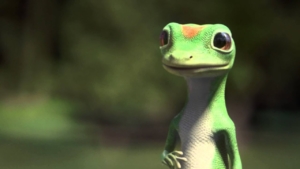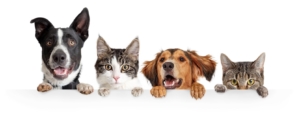
If you see more animals in advertising recently, you aren’t imagining it. Animals sell products, create associations and convey emotions. They also increase sales, boost profits and enhance awareness.
The phenomenon goes beyond cute, cuddly dogs and purring, winsome kittens. Insurance companies have hawked policies by featuring an emu, a camel, a gecko and talking meerkats. Polar bears star in Coke ads. Aflac’s spokesanimal is a duck. Budweiser hauls beer with Clydesdales. Kia employs singing hamsters. Jif says squirrels go nutty for its peanut butter. And CareerBuilder recruits with monkeys. Then there is the MGM lion, Energizer Bunny and Chick-fil-A’s mischievous, sign-wielding cows.
Some animals become famous like Gidget, the Taco Bell chihuahua, and Bullseye, the logo-bearing Target mascot. Many more have become endearing celebrities, such as the Barkleys that dog-test Subarus.
Use of animals in ads is by choice, not chance. Psychologists have found animals can form more lasting impressions in human brains than other humans. Humanlike facial expressions, familiar social behaviors and animal babies are especially appealing because they trigger what psychologists call cognitive maps in our brains. Those maps, according to some psychologists, act like links to our pre-human evolutionary past, perhaps when we lived alongside animals in the wild and depended on them for protection.

Animals can be wonderful visual symbols of positive images. In many ways, they are more compelling examples of behaviors or preferences than their human celebrity counterparts. Animal traits also can pair the right animal with its most receptive audience, which doesn’t fully explain the role of a gecko and emu to auto insurance.
Animals can often project emotional perspectives more demonstrably than people – or at least appear to do so. Dogs can be irrepressibly happy or jaw-to-ground sad. The “smile” pets emit is what make them incomparable therapy animals.

Images of suffering and neglected animals are routinely shown in animal welfare campaigns. Endangered exotic animals play a leading role in campaigns to raise funds to save wildlife, support zoos, preserve sanctuaries, oppose deforestation and promote biodiversity. Animal imagery can serve as logos for conservation efforts such as Save Our Wild Salmon and Defenders of Wildlife.
Animals can be mobilized in public affairs campaigns, too. New Zealand dog and cat owners staged a “work” stoppage by their pets to protest testing on animals by a synthetic drug producer.

Trapped animals are often the victims of crises such as fires, floods and toxic spills. But animals also can be part of rescue and crisis response teams. Trained dogs are used to sniff for survivors and track down lost or injured hikers and skiers. Some animals provide emotional support for crisis victims who have been injured, seen their homes destroyed or lost loved ones.
As powerful as animals can be in advertising and public relations, their use also can come across as exploitive or false, engendering negative impressions and even leading to lawsuits. For example, animal rights activists have sued the makers of Fairlife, a Coca-Cola subsidiary, over its advertising images about “humanely sourced” milk. The legal action, which claimed purchasers of the product were duped, was punctuated by video footage showing cows at the dairy being dragged, slapped or pushed.
Not all animals elicit positive feelings. Snakes, killer hornets, locusts, raccoons and some birds can come across as threatening or pesky. Skunks have recurring roles in ads as a warning sign. A local pest control company runs TV ads with humans in ant costumes becoming “too comfortable” nibbling food on kitchen counters.
Animals can crop up in crime stories. Guard dogs famously thwart intruders or chase down bad guys. Police dogs sniff out illicit drugs in luggage. Two people were arrested after a toddler in Tennessee was found in a cage in a mobile home teeming with 531 rodents, 86 chickens, 56 dogs, 10 rabbits, eight snakes, three cats and one gecko – some alive, some dead. There also were 127 marijuana plants and 17 guns.
Not all animals elicit positive feelings. Snakes, killer hornets, locusts, raccoons and some birds can come across as threatening or pesky.
As alluring as it might be to cast an animal for a major part in your marketing or public affairs campaign, restrain yourself. This should not be a casual choice. Yes, animals can be lovable, grab attention and tug heartstrings. But campaigns with animals also can backfire or misfire.
Human attachment to animals is interactive, not transactional. That’s especially so for animals perceived as loyal, friendly and useful companions. Majestic animals from elephants to pandas to panthers can elicit awe and admiration. However, perceptions of different animals can vary from culture to culture. Some may see lions as powerful, while others view them as dangerous. Dogs can be sleeping companions for dog-lovers and four-legged germ-carriers for Hindus and Muslims.
Animals can be impulsive. You shouldn’t be. Do your research. Know what you’re doing. If you don’t, you may be creating your own howling animal house.



